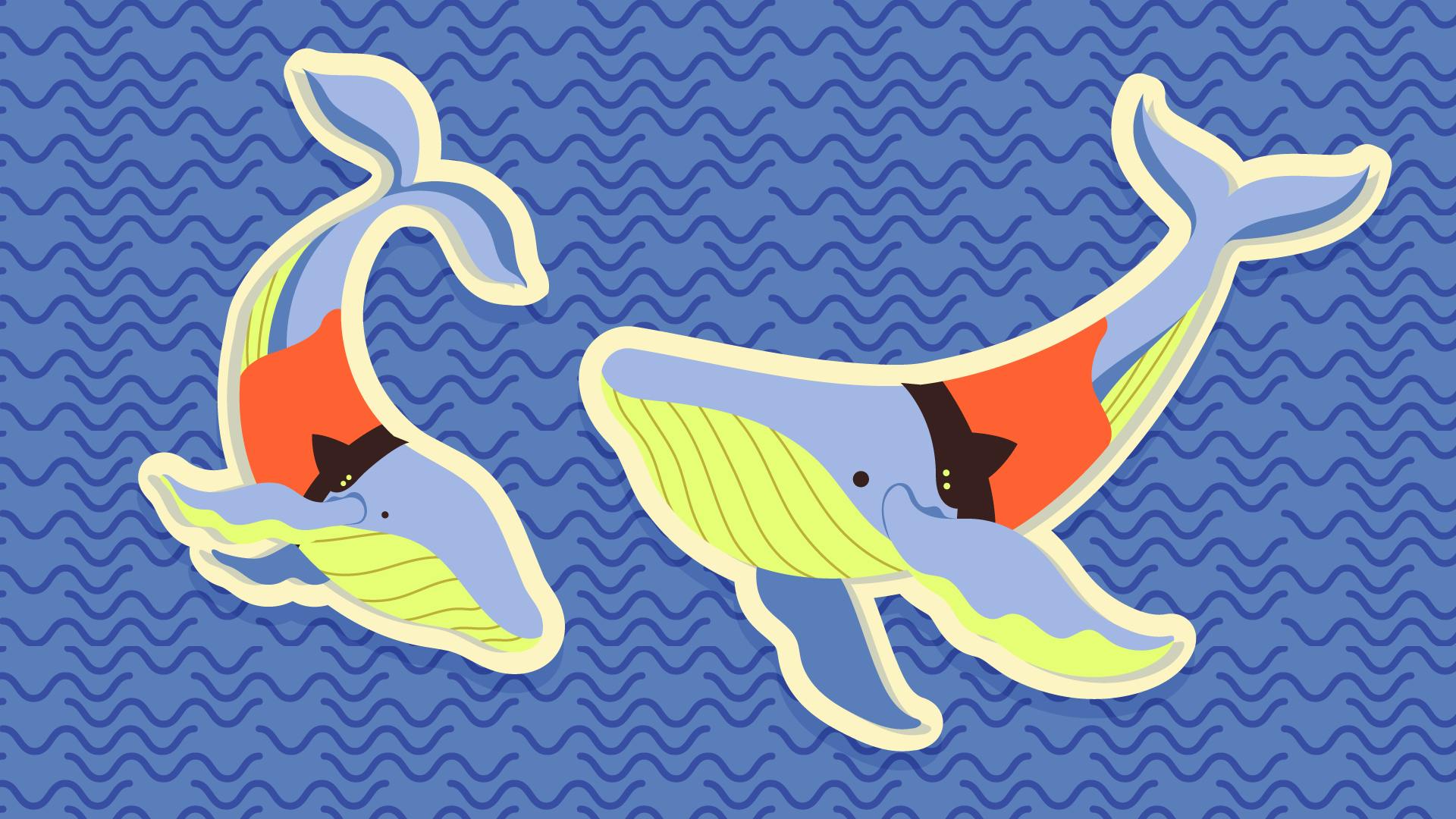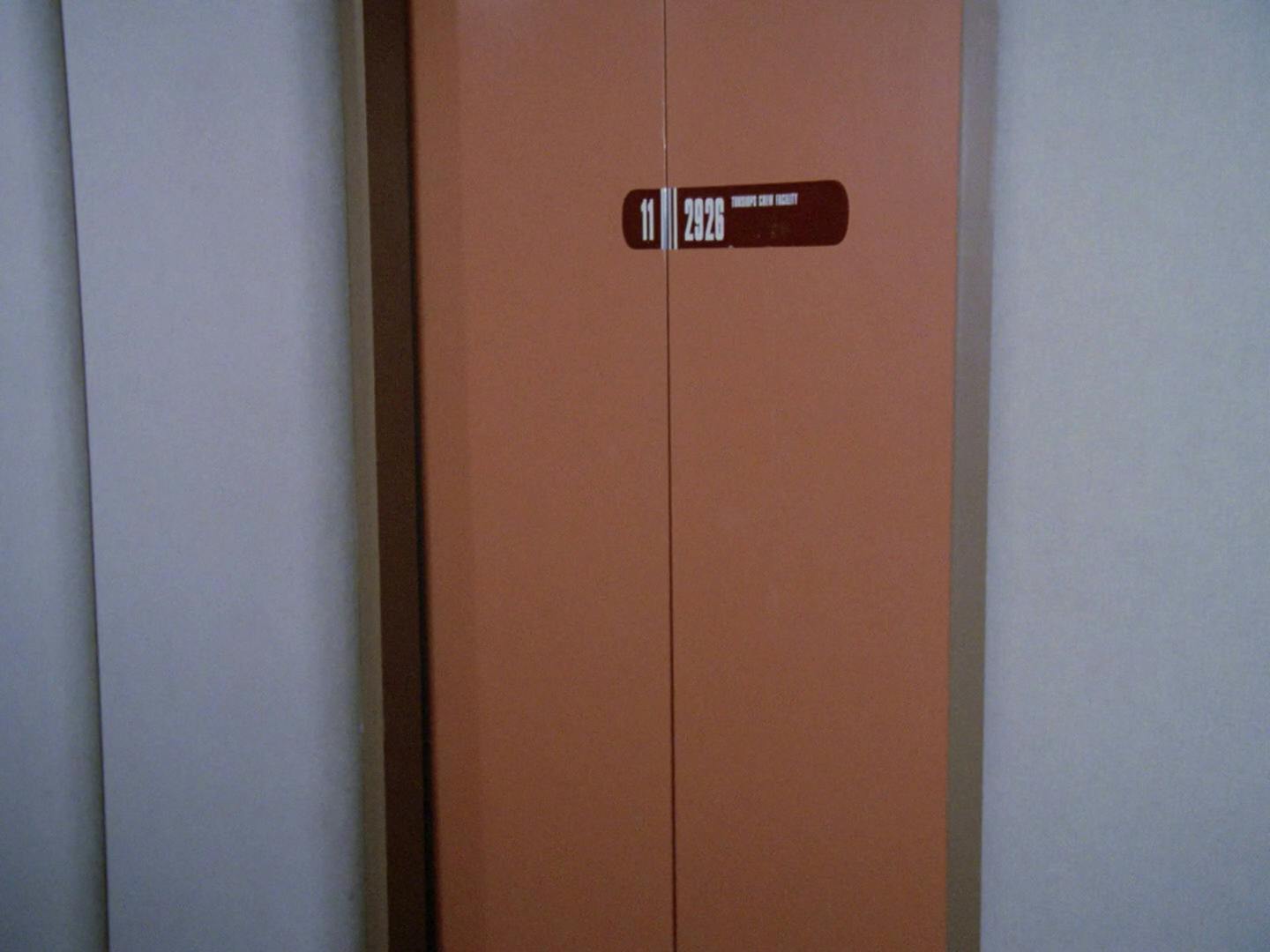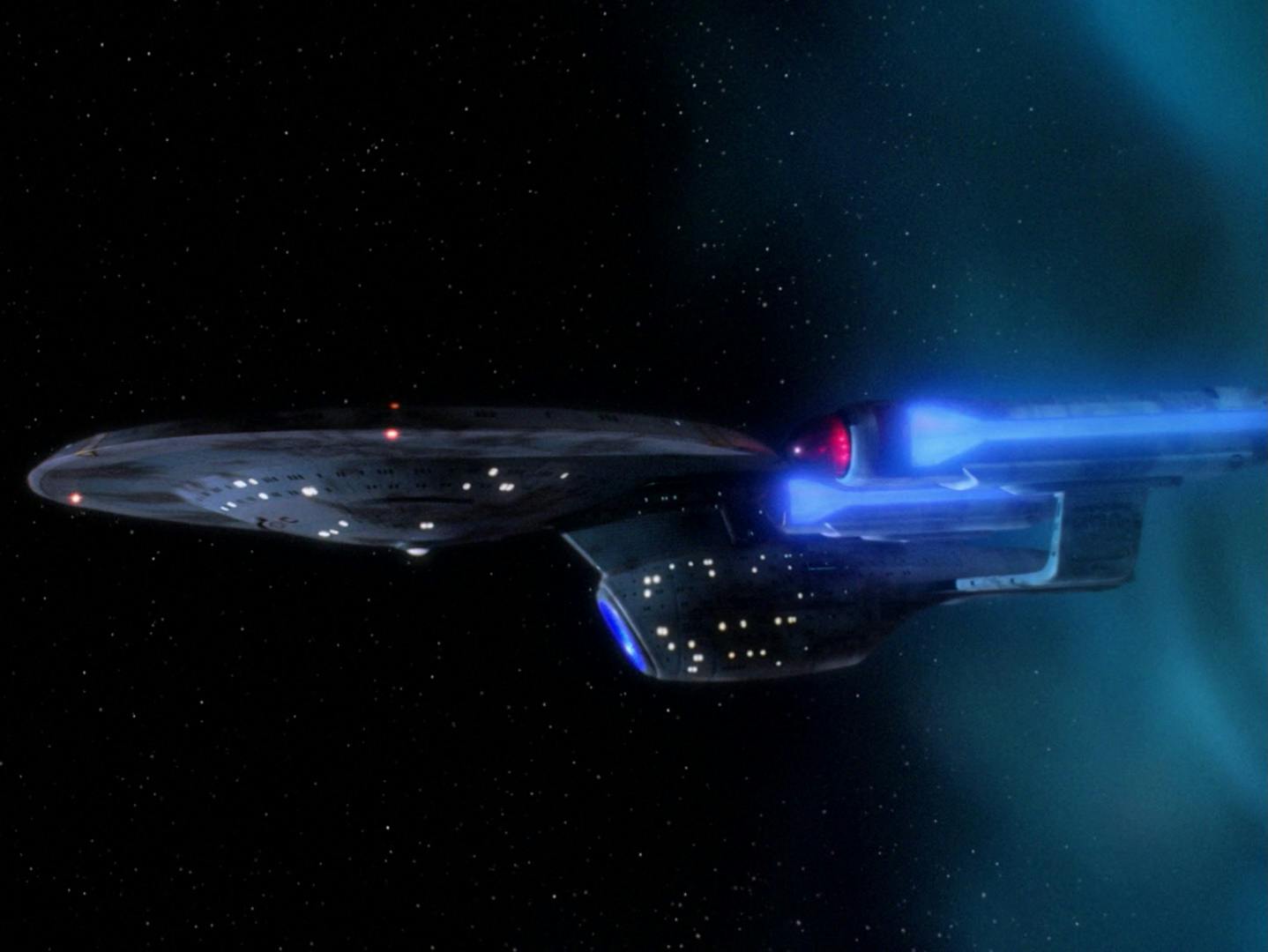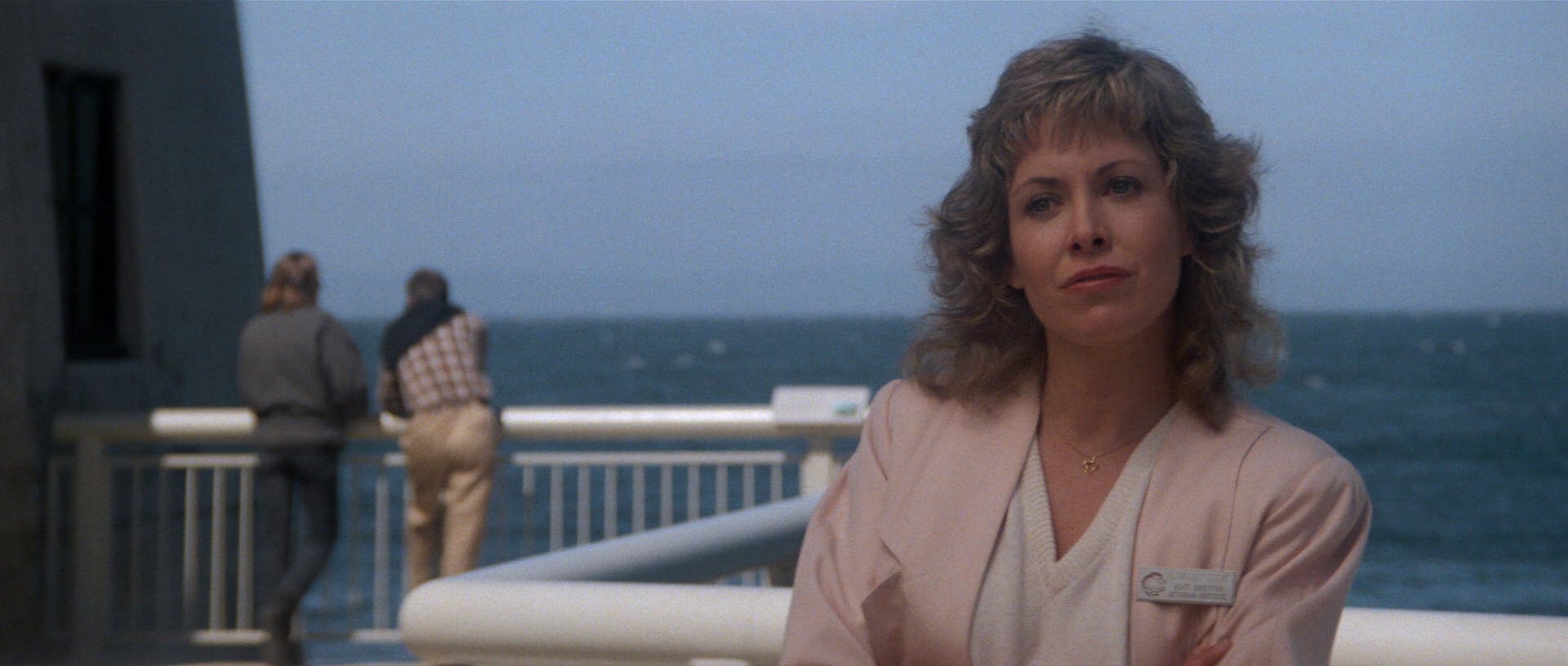Published Jul 15, 2024
There Be Whales Here! A Brief History of Cetacean Ops
The best navigators in outer space come from underneath the waves.
This article contains references to certain aspects of Star Trek: Prodigy Season 2, including minor spoilers about Episode 5, "Observer's Paradox."

StarTrek.com
Seeking out new life and new civilizations sometimes doesn't require anyone to actually leave Earth.
In the grand tapestry of Star Trek, one of the most compelling intelligent lifeforms are various mammals who just happen to need a massive tank of water rather than a dry starship corridor and artificial gravity. To put it another way, highly intelligent whales and dolphins not only exist in the Star Trek universe, but in several instances, these cetaceans are actually members of Starfleet.
The hub for whales and dolphins — who are boldly going where no sea-dwelling-creature-has-gone before — is a place on a starship called Cetacean Ops. Teased in the second season of 's very first episode, the U.S.S. Voyager-A has a large Cetacean Ops center, which houses a massive tank that includes a humpback whale. While this might sound bonkers, the reality is, Star Trek has teased the existence of cetacean crew members as far back as .
Here's how the idea of whale and dolphin crew members began in Star Trek, and how Prodigy honors not only a very old Easter egg, but also one of the most popular, and beloved Trek feature films ever.
Bottlenose Dolphins on the Enterprise-D

"We'll Always Have Paris"
StarTrek.com
In Season 1 of The Next Generation, at the start of the 1988 episode "," there was a very brief, blink-and-you'll-miss-it reference to a very special part of the Enterprise-D. Although the episode itself was a story about a scientist named Manheim, Jean-Luc's lost love Jenice, and a bunch of time loops, there's also a moment where, seemingly, Picard might have accidentally been sharing a turbolift with a few bottlenose dolphins.
As Picard heads to Holodeck 3 to unwind, he rides a turbolift, which has, written on its doors the words "Tursiops Crew Facility." Tursiops is the genus of bottlenose dolphins, which seems to mean that in 2364, on the Enterprise-D, there were some crew members who were bottlenose dolphins. At the time, this little label on the doors was likely intended as a small inside joke.
And yet, just two years prior, in the 1986 film , Star Trek had established that various sea-dwelling creatures on Earth (notably humpback whales) were probably just as intelligent as humans, if not more so. If, in Kirk's time, the Federation got wise to the intelligence of cetaceans, why couldn't there be bottlenose dolphin crew members in the following century?
Cetacean Ops in an Alternate Timeline

"Yesterday's Enterprise"
StarTrek.com
In the classic 1990 Season 3 episode "," the idea that a place called Cetacean Ops existed on the Enterprise-D became a bit clearer. Although not part of the episode's plot at all, early in the episode, we hear "Dr. Joshua Kim, report to Cetacean Ops." Interestingly, this reference to Cetacean Ops happens on the warship version of the Enterprise-D, one that exists in a timeline in which the Federation is engaged in a bitter, decades-long war with the Klingons.
Even in this darker timeline, it seems that Starfleet thought it was still a good idea to bring on dolphins and maybe whales on a larger Galaxy-class ship, to help out with the navigation. In
"Yesterday's Enterprise," Guinan points out that the Enterprise-D is supposed to have families living on the ship, but it doesn't. And yet, even without schools and kids, this warship Enterprise still has sea creatures, tucked away, somewhere in a massive water tank.
In the Prodigy Season 2 episode "Cracked Mirror," this idea is briefly revisited, as Jankom points out that even in certain rough-and-tumble alternate universes, the Voyager-A still has whales on board.
The Cerritos Reveals Kimolu and Matt
Star Trek: Lower Decks - Cetacean Ops
Starting with the very first episode of , Mariner and Boimler make a reference to the fact their ship has a version of Cetacean Ops.
But, it wasn't until the Season 2 Lower Decks finale, "," that we finally got to see a version of Cetacean Ops in all of its watery glory. In this episode, not only was it revealed that the U.S.S. Cerritos had Cetacean crew members, but that these Beluga whales even had their own uniforms. Without the assistance of Lieutenants Matt and Kimolu, the Cerritos would have certainly been lost, and we may have never been given our first glimpse of a version of Cetacean Ops in the 24th Century. That is, until Prodigy Season 2.
Gillian, the Humpback Whale

"Observer's Paradox"
StarTrek.com
As with many aspects of Prodigy, the inclusion of Cetacean Ops brings together many aspects of the Star Trek franchise at the same time. When the gang gets assigned to the Voyager-A on a mission to help Janeway investigate a time-displacing wormhole, each former member of the Protostar crew gets their own assigned area. Rok-Tahk is thrilled to be assigned to Voyager's version of Cetacean Ops, which houses some of the "finest navigators" in all of Starfleet.
By Episode 5, "Observer's Paradox," we learn that Voyager's resident humpback, and Rok-Tahk's new bestie, is named Gillian. This references Dr. Gillian Taylor from , a (human) Cetacean biologist from 20th Century Earth, who traveled into the 23rd Century along with Kirk, Spock, Bones, Uhura, Sulu, Scotty, and Chekov on a stolen Klingon Bird-of-Prey nicknamed the H.M.S. Bounty. At that point in Trek history, Spock had discovered that a mysterious alien probe was actually speaking in whalesong, which was why the Universal Translator was unable to decipher its language.

Star Trek IV: The Voyage Home
StarTrek.com
The Voyage Home ended up with the crew being back in the year 2286, but, Prodigy Season 2 takes place nearly exactly a century later, in 2384 (and into 2385). By this time, it's clear that Starfleet has no problem communicating with humpback whales, making those stray background Easter eggs from The Next Generation into a functional fact of everyday life.
Fittingly, Gillian becomes the key to the gang understanding Murf's language, which, at this point, had been unintelligible. Turns out, as Rok says, "Some frequencies can't be heard, unless they're submerged — like the harmonics of a whale."
At the very start of Prodigy, the reason Dal, Gwyn, Rok, Zero, and Jankom were able to come together was because of the discovery of the Universal Translator; a Federation gizmo that helped them all bridge cultural divides and speak to each other. And now, the heroes of the Protostar are finally able to understand Murf, all thanks to a method that Spock figured out in The Voyage Home. In that film, humpback whales taught the crew of the late-starship Enterprise to think differently about the nature of communication and the definition of sentience. And now, over four decades later, Prodigy is doing the same thing — breaking down barriers and stereotypes, all with the help of a whale.





